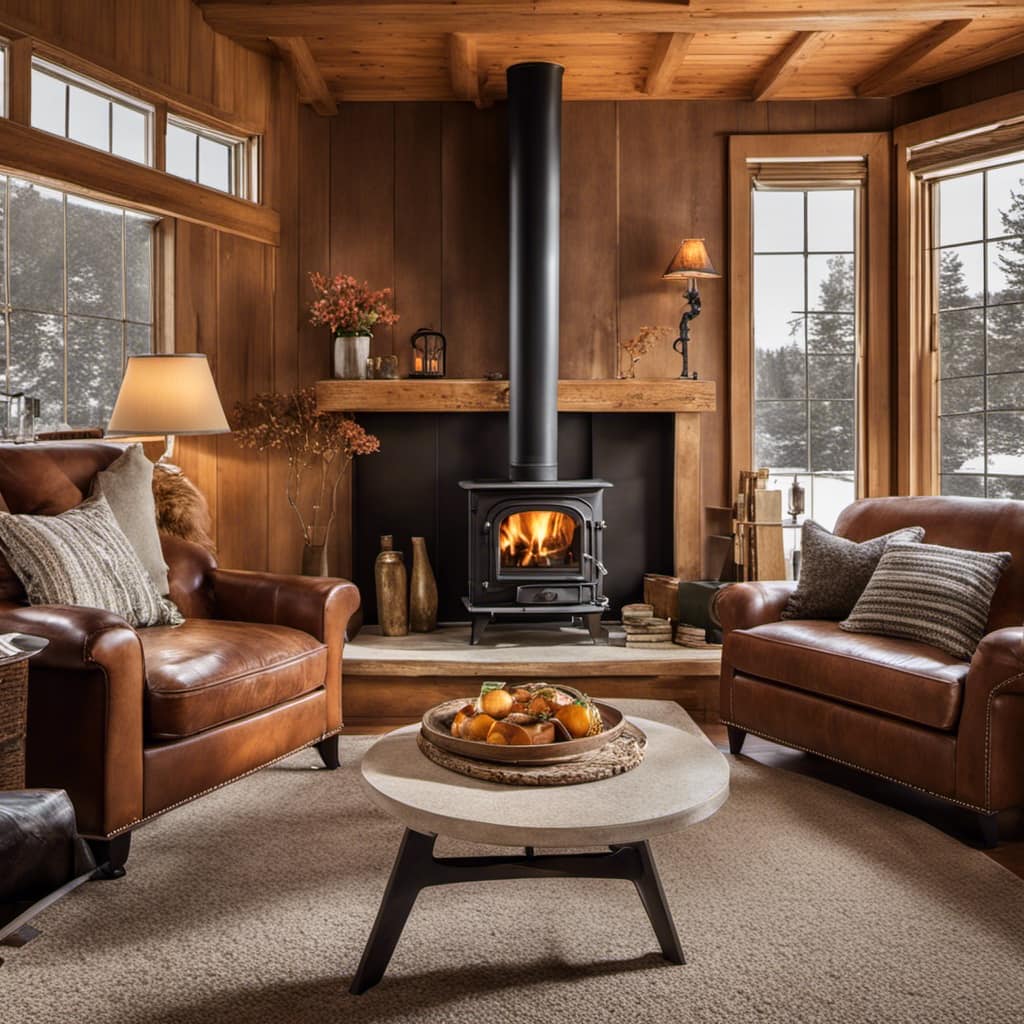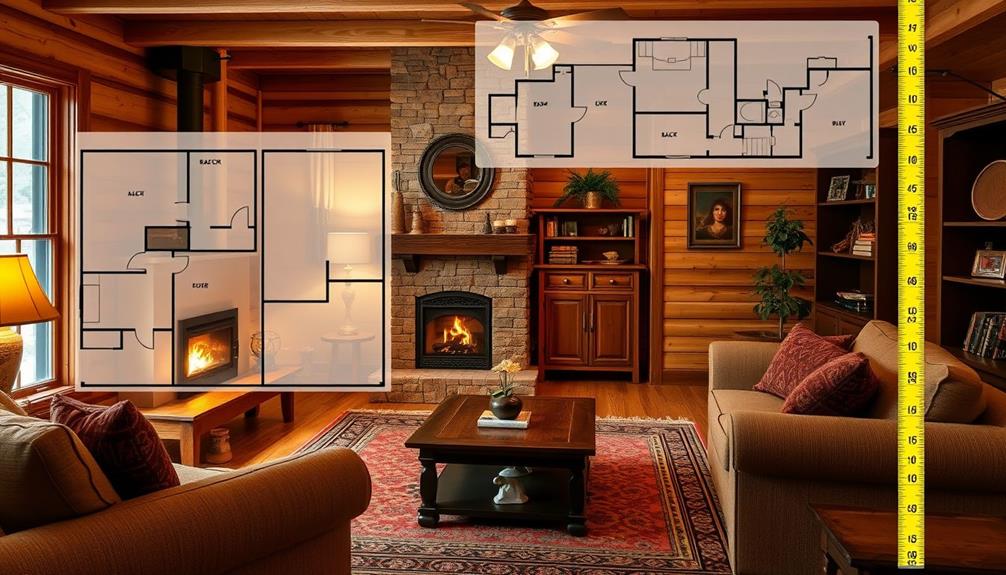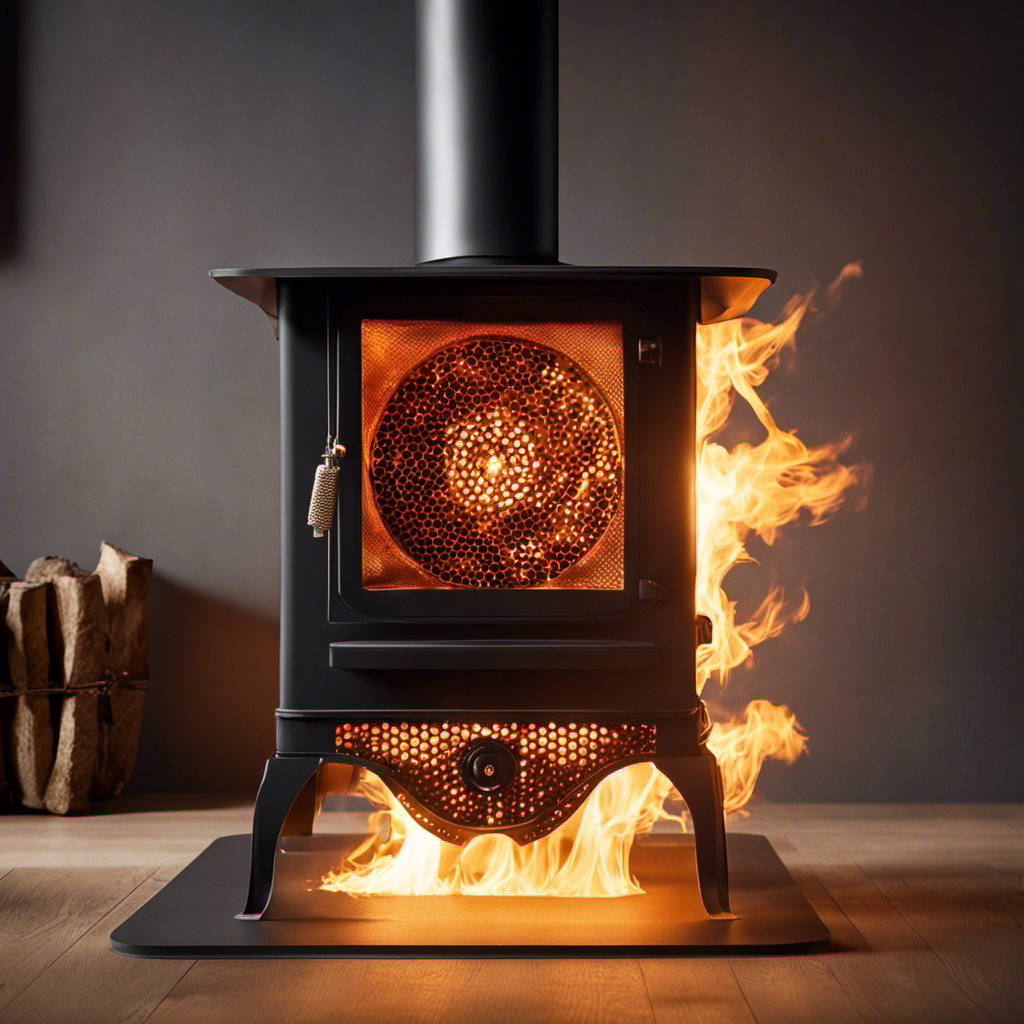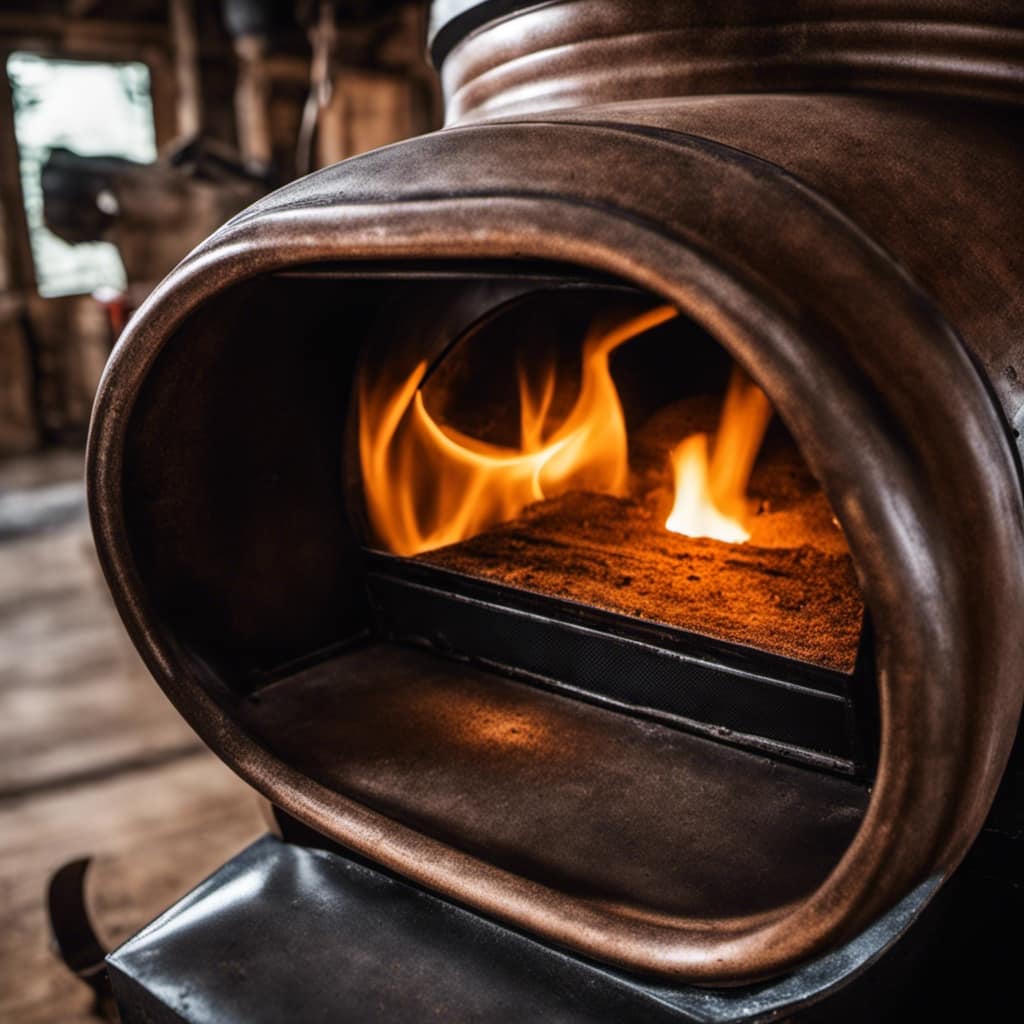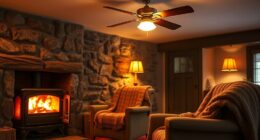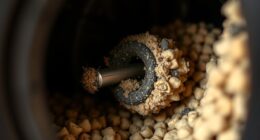
I have always been enchanted by the warmth and coziness of a wood stove on a cold winter night. However, I must confess that the idea of installing the stove pipe initially seemed intimidating to me.
However, after some research and hands-on experience, I discovered the secrets to a successful installation. In this article, I’ll share my knowledge and guide you through the process of hooking up a wood stove pipe, ensuring proper ventilation and safety every step of the way.
First, it’s important to understand the purpose of a stove pipe. It serves as a conduit for the smoke and gases produced by the wood stove to exit the home safely. Without a properly installed stove pipe, these harmful byproducts can build up and pose a serious health risk.
When selecting a stove pipe, you’ll want to choose one that is rated for use with wood stoves. It should be made of durable materials, such as stainless steel or double-walled black pipe, to withstand the high temperatures generated by the stove.

Once you have the appropriate stove pipe, the next step is to determine the best location for the stove in your home. Ideally, it should be placed in a central area, away from combustible materials such as furniture or curtains. You’ll also need to ensure that there is a clear path for the stove pipe to exit the home.
Before beginning the installation process, it’s important to check your local building codes and regulations. Some areas may have specific requirements for wood stove installations, including minimum clearances and the need for a permit. By following these guidelines, you can ensure that your installation is up to code and safe.
When installing the stove pipe, it’s crucial to maintain the proper clearances. This includes maintaining a minimum distance from combustible materials, such as walls or ceilings. Additionally, you’ll need to ensure that the stove pipe is properly supported and secured to prevent any movement or sagging.
Proper ventilation is another key aspect of a wood stove pipe installation. This typically involves installing a chimney or flue system that extends above the roofline. The height of the chimney is important to create the necessary draft for the smoke and gases to be safely expelled from the home.

Throughout the installation process, it’s important to prioritize safety. This includes wearing protective gear, such as gloves and safety glasses, and taking precautions to prevent fire hazards. It’s also a good idea to have a fire extinguisher nearby in case of emergencies.
By following these steps and guidelines, you can successfully hook up a wood stove pipe and enjoy the cozy warmth of your wood stove with peace of mind. Remember to consult with a professional or experienced installer if you have any doubts or questions along the way.
Key Takeaways
- Select a stove pipe compatible with your wood stove and ensure the diameter matches the outlet size.
- Gather all the necessary tools and materials before starting the installation process.
- Prepare the wood stove by inspecting and cleaning it, and install the chimney flue securely.
- Connect the stove pipe sections properly, ensuring an airtight seal between joints and regular inspection and cleaning for proper ventilation.
Selecting the Right Type of Stove Pipe
I think the most important factor when selecting the right type of stove pipe is ensuring it’s compatible with your wood stove. Choosing the correct diameter is crucial to ensure proper ventilation and efficiency.
It’s important to understand the clearance requirements of your wood stove and the type of stove pipe you’re considering. This will help prevent any fire hazards or damage to your home. The diameter of the stove pipe should match the outlet size of your wood stove.
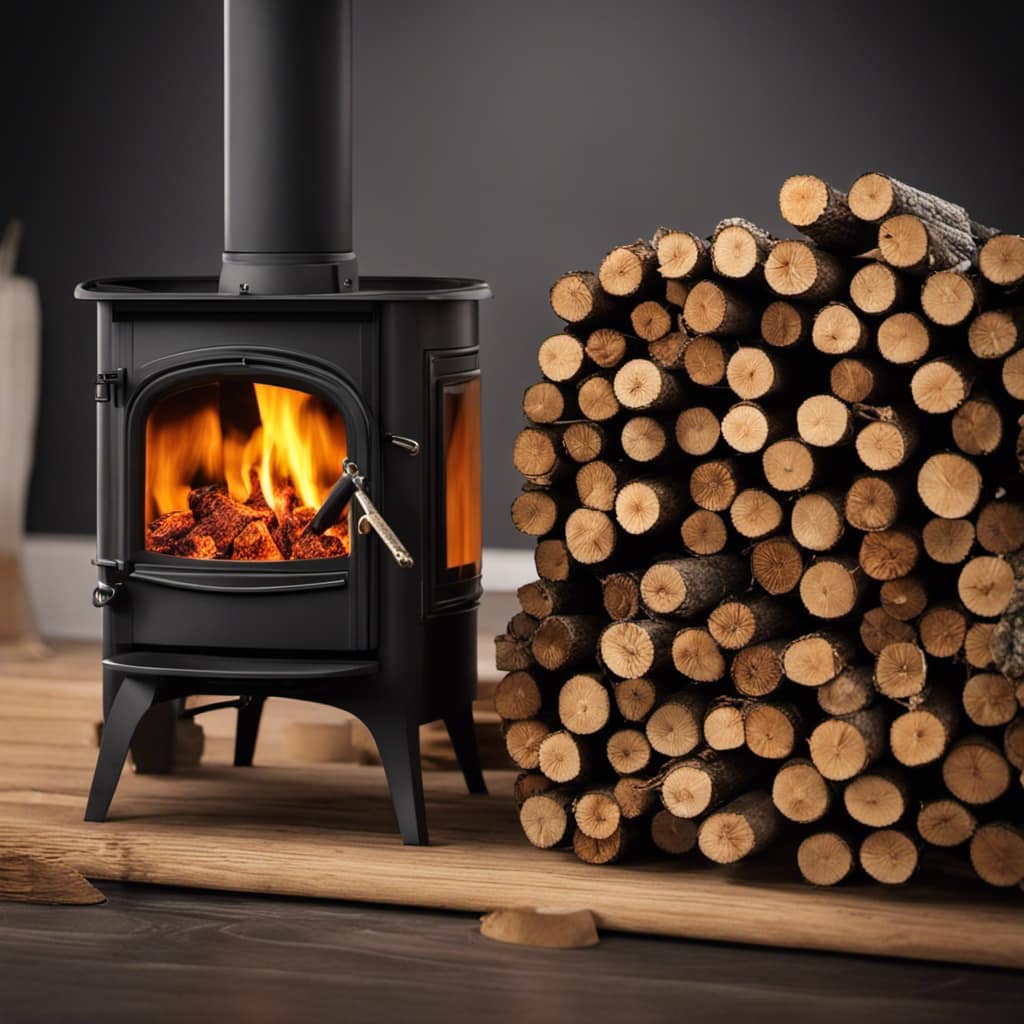
Additionally, you need to consider the clearance requirements, which refer to the distance between the stove pipe and any combustible material like walls or ceilings. By understanding these factors, you can select the right stove pipe that will work best for your wood stove setup.
Now, let’s move on to gathering the necessary tools and materials.
Gathering the Necessary Tools and Materials
To gather everything I need, I’ll first check if I have the required tools and materials. It’s important to have the necessary tools and materials ready before starting the installation process.
For hooking up a wood stove pipe, the tools you’ll need include a tape measure, a level, a drill with appropriate drill bits, a screwdriver, and a pair of pliers. Additionally, you’ll require a chimney pipe, stove pipe, elbows, brackets, screws, and high-temperature sealant.

Once you’ve gathered all the necessary tools and materials, the next step is to measure the pipe length. This will ensure that you have the correct size of pipes for your wood stove installation.
With all the tools and materials ready, let’s move on to preparing the wood stove for installation.
Preparing the Wood Stove for Installation
Before installing, I’ll make sure the wood stove is properly prepared. Here are the steps I’ll take to ensure a successful installation:
-
Inspect the wood stove: I’ll check for any signs of damage or wear, such as cracks or rust. If necessary, I’ll replace any damaged parts before proceeding.

-
Clean the stove: I’ll remove any ash or debris from the firebox and clean the stove’s exterior. This will help improve its efficiency and prevent any potential fire hazards.
-
Install the chimney flue: I’ll carefully measure and cut the flue pipe to the appropriate length. Then, I’ll attach it to the stove’s flue collar, ensuring a secure fit. I’ll also make sure the flue pipe is properly supported and aligned with the stove.
-
Seal the pipe joints: To prevent any smoke or gas leaks, I’ll use high-temperature silicone sealant to seal the connections between the flue pipe sections. This will ensure a tight and safe seal.
Connecting the Stove Pipe Sections
The stove pipe sections easily connect with a secure fit, ensuring proper ventilation for the wood stove.

When installing a chimney cap, it’s important to have a clear stovepipe pathway for the smoke and gases to escape. Begin by attaching the first section of the stove pipe to the flue collar on the wood stove. Make sure it’s aligned properly and securely fastened with screws or clamps.
Then, connect additional sections by sliding the male end into the female end of the previous section. Use high-temperature silicone sealant to create an airtight seal between the joints.
It’s crucial to maintain a clear pathway by regularly inspecting and cleaning the stove pipe for any blockages or creosote buildup. By doing so, you can ensure proper ventilation and safety measures for your wood stove.
Ensuring Proper Ventilation and Safety Measures
I always prioritize proper ventilation and safety measures when installing and maintaining my wood stove. Ventilation considerations and safety precautions are crucial to ensure the safe and efficient operation of a wood stove. Here are four important factors to keep in mind:

-
Clearances: Maintain proper clearances between the stove and combustible materials to prevent fires. Follow the manufacturer’s guidelines for minimum clearances to walls, floors, and ceilings.
-
Chimney Height: The height of the chimney is essential for proper draft and ventilation. A taller chimney creates a stronger draft, helping to remove smoke and gases effectively.
-
Combustion Air: Adequate combustion air is necessary for efficient burning and proper ventilation. Ensure that there’s enough air supply by opening a window or installing an air intake vent.
-
Carbon Monoxide Detectors: Install carbon monoxide detectors near the wood stove to detect any potential buildup of this odorless and deadly gas.

Frequently Asked Questions
How Often Should the Wood Stove Pipe Be Cleaned and Maintained?
I clean and maintain my wood stove pipe regularly to ensure it functions properly. Here are some tips for maintaining and cleaning wood stove pipe: inspect for creosote buildup, use a brush to clean, and check for any damages or leaks.
Can I Use a Single-Wall Stove Pipe Instead of a Double-Wall Stove Pipe?
I can use a single-wall stove pipe instead of a double-wall stove pipe, but there are advantages to using double-wall. It provides better insulation and reduces the risk of heat transfer to combustible materials.
Is It Safe to Install a Wood Stove Pipe Through a Wall or Does It Have to Be Installed Through the Roof?
Installing a wood stove pipe through a wall is safe as long as proper installation guidelines are followed. It is important to ensure that the pipe is vented correctly and that all safety measures are taken into account.
Can I Use the Same Stove Pipe for Both a Wood Stove and a Pellet Stove?
Yes, you can use the same stove pipe for both a wood stove and a pellet stove. However, it is important to ensure that the pipe is suitable for both fuels and properly vented for the specific requirements of each stove.

Are There Any Specific Building Codes or Regulations That Need to Be Followed When Installing a Wood Stove Pipe?
When it comes to the installation process of a wood stove pipe, it is crucial to follow specific building codes and regulations. Safety precautions must be taken into account to ensure a proper and secure setup.
Conclusion
In conclusion, properly hooking up a wood stove pipe is crucial for efficient and safe operation. By selecting the right type of stove pipe, gathering the necessary tools and materials, preparing the wood stove, and connecting the sections correctly, you can ensure proper ventilation and safety measures.
Following these steps won’t only make your wood stove more effective but also provide peace of mind knowing that you’ve taken the necessary precautions for a successful installation.
Growing up surrounded by the vast beauty of nature, Sierra was always drawn to the call of the wild. While others sought the comfort of the familiar, she ventured out, embracing the unpredictable and finding stories in the heartbeat of nature.
At the epicenter of every remarkable venture lies a dynamic team—a fusion of diverse talents, visions, and passions. The essence of Best Small Wood Stoves is crafted and refined by such a trio: Sierra, Logan, and Terra. Their collective expertise has transformed the platform into a leading authority on small wood stoves, radiating warmth and knowledge in equal measure.

